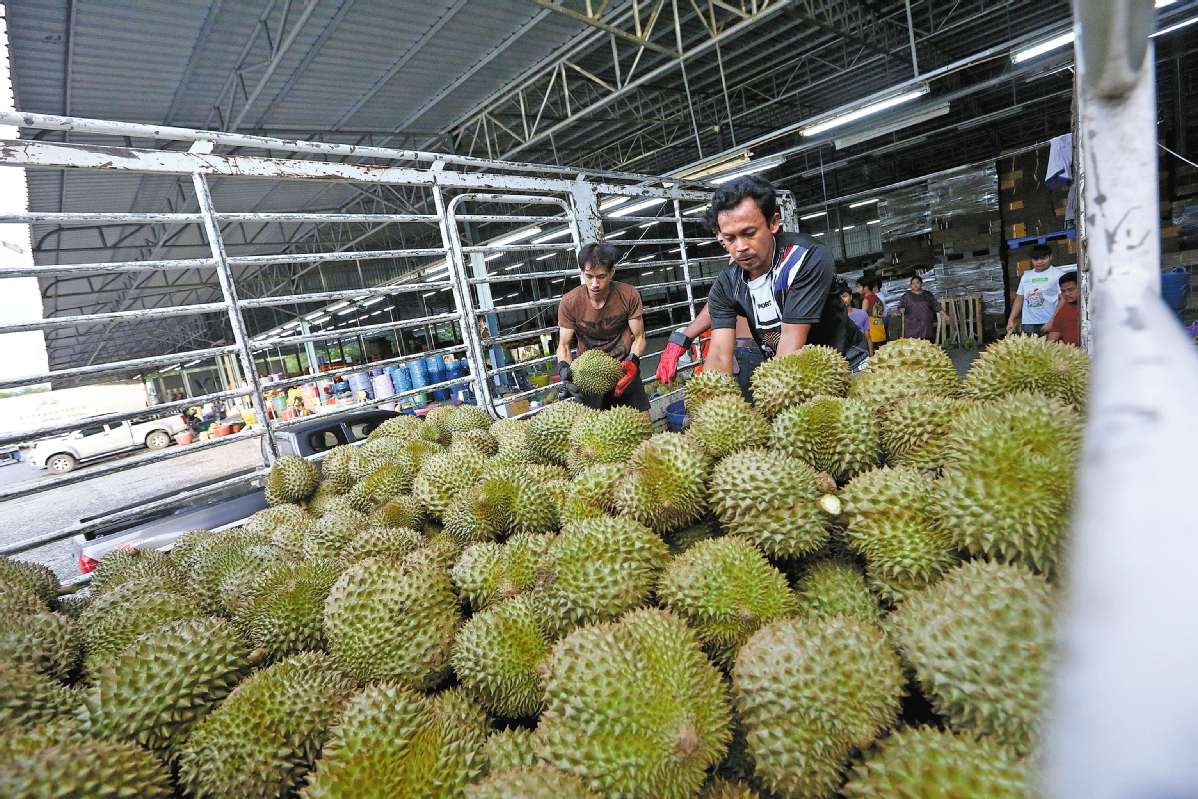Thai durian farmers reap gains from smart solutions
Advanced tech helps boost productivity to meet booming global demand


Pilot project
About an hour's drive north of downtown Chanthaburi city, a durian orchard covering an area of eight hectares emerges from the lush woods. Home to 640 young durian trees, it is a Beyondsoft pilot project.
In the orchard, integration of water and fertilizer has been introduced, which reduces water consumption while doubling the efficiency of fertilization and pest control. A soil detection system has also been installed to collect data on mineral elements, soil moisture, and pH value.
Chang Canxian, managing director of Beyondsoft's Southeast Asia Region Operations, said the orchard has a real-time monitoring system for weather forecasting. It records durian trees' growing conditions while monitoring pests and diseases.
"All those data will be uploaded to an online system, providing guidance for scientific farming. Together, the smart solutions will significantly reduce human labor costs and largely improve farming efficiency," Chang said.
"Moreover, we have an expert team that can provide support either online or on-site as requested, covering farming suggestions and technical assistance."
According to Zhao Gang, who is in charge of Beyondsoft's Digital Tech and Software Department, the company has so far helped upgrade three tropical fruit farms in Thailand using smart technologies. Apart from Thailand, it has also worked in countries such as Malaysia, Vietnam, and Cambodia, to upgrade local farms into smart ones.
"Together with the internet of things, smart orchard application systems, big data platforms and traceability application systems, we aim to provide a comprehensive digital solution, empowering production, management, and sales at multiple levels while enhancing agriculture efficiency, as well as economic benefits to local farmers," he said.
According to statistics from the Chanthaburi Chamber of Commerce, the province will export an estimated 800,000 metric tons of durians this year, and the amount is expected to surge to 1.1 million next year. Nearly 90 percent of the export volume will go to the Chinese market.





































